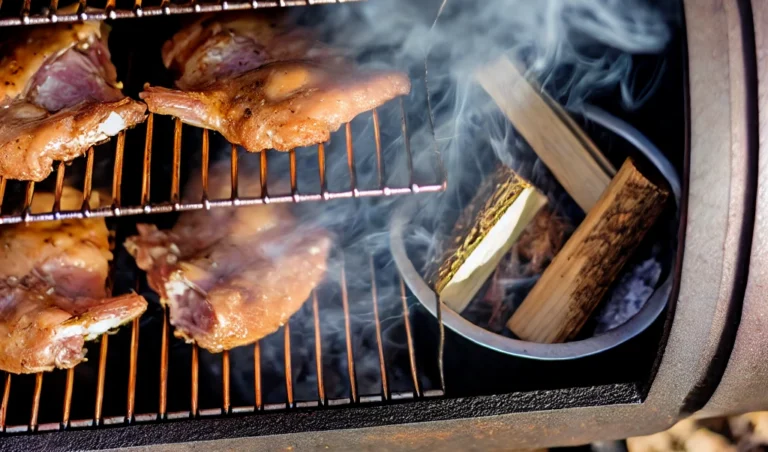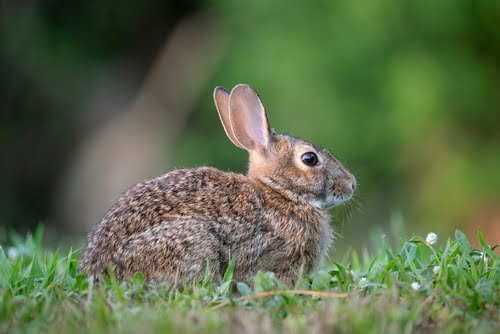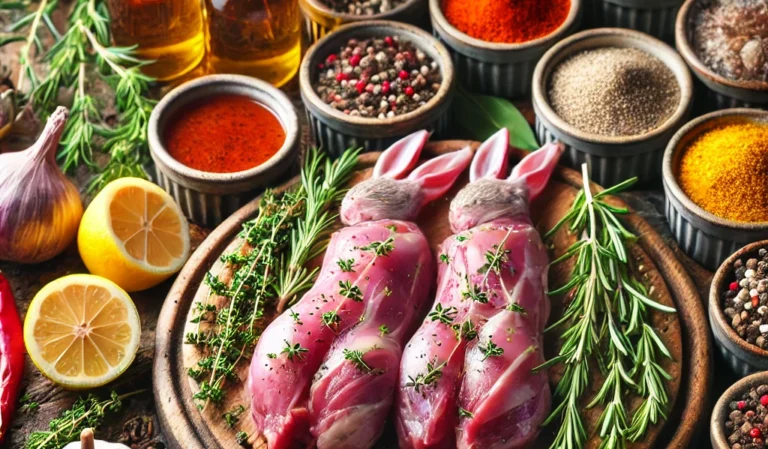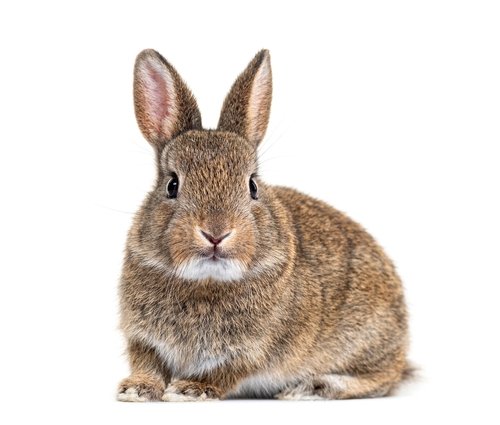Field Dressing a Rabbit – 7 Steps for Success
Picture this: you’re out in the wilderness, the crisp air filling your lungs and a triumphant sense of adventure coursing through your veins. You’ve successfully hunted down a rabbit, a small but compelling prize that promises to be a delectable addition to your dinner table. Now comes the crucial next step: field dressing a rabbit.
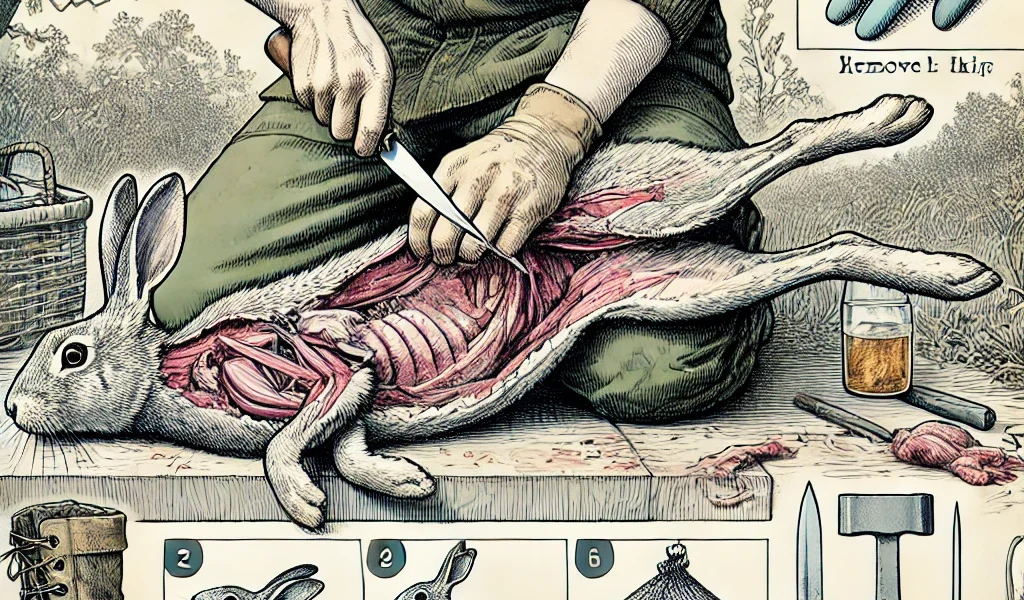
Don’t let this term intimidate you; it simply refers to removing an animal’s internal organs and skin to maximize meat quality and preservation. In this rabbit field dressing guide, we’ll delve into the world of field dressing a rabbit and discuss its immense importance for optimal meat quality and long-term storage.
A Culinary Conundrum
Field dressing is not just some arcane ritual reserved for seasoned hunters or survivalists; it is an essential skill that any outdoor enthusiast who desires to enjoy nature’s bounty can acquire. Regarding rabbits – those deliciously tender creatures with their delicate flavor – proper field dressing is key! Swiftly removing their innards prevents spoilage, reduces any unpleasant aftertaste, and ensures that every succulent bite will be pure culinary bliss.
A Journey Through Rabbit Field Dressing Steps
Before we embark on our journey of rabbit field dressing steps, let’s take a moment to familiarize ourselves with an overview of the entire process. Field dressing involves two primary objectives: removing the entrails and skin while preserving as much edible meat as possible.
This ensures that only pristine cuts enter your cooking pot or freezer. The first step entails gathering the necessary tools and supplies – think sharp knives or small game gutting tools and disposable gloves for hygiene purposes.
These essentials prepare our cherished quarry for field dressing by ensuring a humane kill and removing any external debris or fur. Armed with the proper setup, we deftly proceed to the intricate task of gutting and skinning the rabbit, carefully avoiding damage to the internal organs or meat.
We conclude our endeavor by cleaning up and preserving the meat quality for future enjoyment. This includes rinsing the cavity to eliminate residual blood or debris, trimming excess fat if desired, and storing our dressed rabbit in a cool place until it’s ready for further culinary exploration.
So strap on your metaphorical hunting boots as we embark on this enlightening rabbit field-dressing journey. By honing this skill, you unlock access to exquisite flavors and gain a deeper appreciation for nature’s gifts and a sense of self-sufficiency that can’t be found elsewhere.
The Necessary Tools and Supplies
A Razor-Sharp Knife or Small Game Gutting Tool
When field dressing a rabbit, having a reliable tool is essential. A razor-sharp knife or a small game gutting tool will make the process much easier and safer.
Choose a sturdy blade with a sharp point for precision. You’ll need to make incisions along the Belly and around specific organs, so having a sharp tool ensures clean cuts and reduces the risk of accidentally damaging the meat.
Disposable Gloves for Hygiene
While field dressing a rabbit, maintaining proper hygiene is crucial to prevent any potential contamination. Disposable gloves protect your hands from becoming messy and help minimize cross-contamination between different animals you might be dressing. Make sure to choose gloves that fit comfortably and allow for easy movement of your fingers.
Plastic Bags or Game Pouch to Carry the Dressed Rabbit
Once you’ve completed field dressing the rabbit, you’ll want an efficient way to carry it without causing any mess or spoilage. Plastic bags or specially designed game pouches are perfect for this purpose.
They keep the dressed rabbit separate from other harvested game, preventing any unwanted mixing of odors or fluids. Ensure your chosen bag is durable enough to withstand punctures and seal tightly to maintain freshness on your way back from the hunting grounds.
Preparing the rabbit for field dressing
Ensure the rabbit is properly killed and handle it with care
Before embarking on the rabbit field dressing steps, ensuring that the rabbit has been humanely dispatched is essential. There are several methods to accomplish this, such as a swift blow to the back of the head or severing the spinal cord. Remember, it’s crucial to minimize any unnecessary suffering for the animal.
Once your rabbit is properly dispatched, it’s time to handle it carefully. Gently pick up the rabbit by its hind legs and hold it securely but delicately.
Avoid applying excessive force or pressure that could damage the meat or result in unnecessary bruising. By treating the animal respectfully, you honor its life and prepare for a high-quality meal.
Remove any external debris or fur from the rabbit’s body
Now that you have ensured a humane dispatch and handled the rabbit carefully, it’s time to remove any external debris or fur from its body. Start by inspecting its fur for any visible dirt, leaves, or other contaminants that may have accumulated during hunting.
Using your gloved hands, gently brush off these particles from its fur. Pay close attention to areas like underbelly, legs, and around the head where debris collects.
This process helps maintain cleanliness and ensures that no unwanted substances come into contact with your meat while field dressing a rabbit. By taking these simple yet critical preparatory steps in field dressing a rabbit – ensuring proper dispatch and handling with care while removing external debris –you set yourself up for success in achieving optimal meat quality throughout this rewarding process.
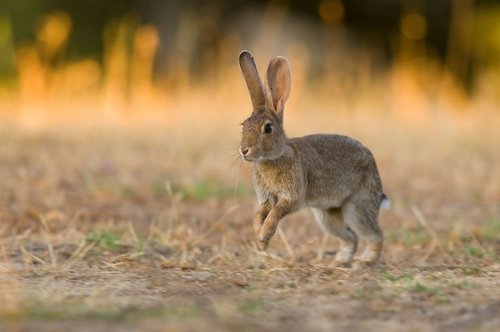
Gutting and Skinning the Rabbit
Make an incision along the Belly
When field dressing a rabbit, the first step is to carefully make an incision along its Belly. Start just below the ribcage and bring your blade down towards the tailbone. Take your time with this step, as precision is key.
You want to ensure that you don’t accidentally puncture any internal organs while making this incision. The length of the cut will depend on the size of the rabbit, but it’s generally recommended to cut about four to six inches.
Be Cautious of Internal Organs
As you’re making the incision, it’s crucial to be extremely cautious not to puncture any internal organs. The last thing you want is to contaminate the meat with any unwanted substances or compromise its quality.
Keep your knife steady and take it slow, feeling for any resistance as you move along. If you encounter any organs or intestines while cutting, adjust your angle or depth to avoid damaging them.
Separate Skin from Underlying Tissues
Once you’ve made a clean incision along the Belly of the rabbit, it’s time to separate its skin from underlying tissues. This step requires a gentle touch and some finesse.
Using your fingers, carefully work underneath the skin, gradually detaching it from muscles and other structures beneath. Be patient, and do not tear or rip the skin in this process.
Peel Back and Remove Skin
As you continue working from front to back, gently peel back and remove the skin from around the rabbit’s body. It should come off relatively easily if you’ve successfully separated it from underlying tissues during previous steps.
If you encounter any resistance, use your knife to assist, but be cautious not to cut into the meat. The goal is to remove the skin while preserving as much valuable meat as possible.
Remember, practicing these steps in this rabbit field dressing guide will enable you to dress a rabbit skillfully for consumption. Taking your time and being mindful of every cut and movement will result in a clean and well-prepared rabbit carcass for further processing or cooking.
Removing Internal Organs
Cut around the anus to free the rectum, then carefully pull it out
Now that you’ve successfully skinned the rabbit, it’s time to remove the internal organs. To do this, locate the anus and make a small cut around it, being careful not to puncture any surrounding tissues.
Once you’ve made the incision, gently grasp the rectum and slowly pull it out of the rabbit’s body. Remember to take your time and be mindful not to sever any attached tissues during this delicate process.
Remove the bladder by cutting around it and gently pulling it out
Next up is removing the bladder. Locate the bladder, usually found towards the back of the abdominal cavity. Using your knife or gutting tool, carefully cut around it while being cautious not to puncture or damage it.
Once you’ve made a clean incision all the way around, gently pull on the bladder until it detaches from its attachments within the rabbit’s body. Take extra care not to spill urine onto the meat as you remove it.
Carefully cut through the diaphragm muscle and remove the lungs.
Now comes a crucial step in field dressing a rabbit—cutting through the diaphragm muscle and removing the lungs. The diaphragm separates the chest cavity from the abdominal cavity, so we need to carefully dissect this muscle without damaging other vital organs like the heart or liver. Use your knife or gutting tool to make an incision along either side of this muscle, taking your time to ensure precision.
Once you’ve cut through both sides of the diaphragm muscle, gently reach inside and remove both lungs. Remember that caution is essential throughout these steps in field dressing a rabbit.
Take your time with each incision and organ removal process to preserve meat quality and prevent accidental heart or liver damage. By following these rabbit field dressing steps, you’ll be well on your way to preparing a delicious meal from your hunt.
Cleaning up and preserving meat quality
Once you have successfully gutted and skinned the rabbit, it is time to clean up the cavity to ensure optimal meat quality. Begin by rinsing the cavity with cool water and gently scrubbing any remaining blood or debris.
This step helps eliminate any potential contaminants that might affect the taste or safety of the meat. Take your time and be thorough, paying close attention to hard-to-reach areas like crevices and folds in the flesh.
Rinse the cavity with cool water, removing any remaining blood or debris
Hold the rabbit under a gentle stream of cool water to rinse the cavity effectively. Use your hands or a soft brush to remove any stubborn residue.
Be cautious not to use hot water as it can prematurely cook the meat and negatively impact its texture. Thoroughly cleaning out all traces of blood will significantly contribute to maintaining freshness and flavor.
Trim excess fat if desired.
If you prefer leaner meat, it’s recommended to trim away excess fat from the dressed rabbit. Fat can sometimes have a strong flavor that some individuals find overpowering. Carefully use a sharp knife to remove visible fat deposits around the edges of the cuts or along areas of thicker skin on larger rabbits.
Place the dressed rabbit in a plastic bag or game pouch
Place the dressed rabbit into a sturdy plastic bag or game pouch to protect your hard-earned bounty. Ensure no punctures or openings in the bag may allow air or insects to penetrate—nobody wants unwanted guests ruining their efforts! Securely tie off or seal the bag/pouch to maintain freshness until further processing, cooking, or freezing.
Store in a cool place until ready for further
After dressing and securing the rabbit in its protective covering, please select a cool place to store it until you are prepared to proceed. Choose a cool room or refrigerated area where the temperature remains consistently between 34°F and 40°F (1°C —4°C).
This will help preserve the quality of the meat and prevent spoilage. Remember, proper temperature control is crucial for maintaining safety!
Conclusion
By following this rabbit field dressing guide and mastering the art of field dressing a rabbit, you have gained a valuable skill that can enhance your hunting experience. Not only does field dressing contribute to optimal meat quality, but it also ensures that nothing goes to waste.
With every successful field dressing session, you become more self-reliant and connected with nature’s provisions. So take pride in your newfound expertise and savor each flavorful bite of your well-prepared rabbit dishes!

